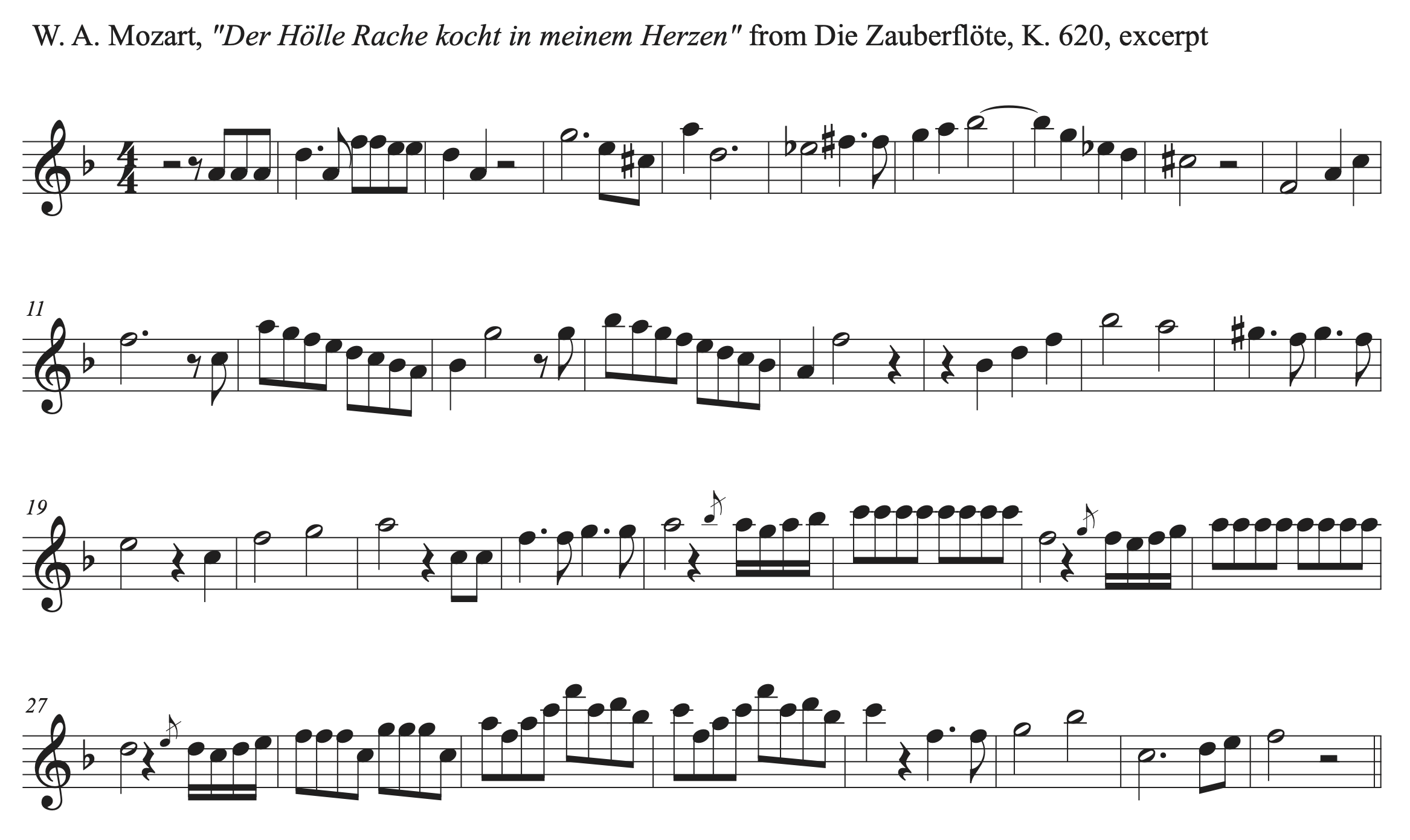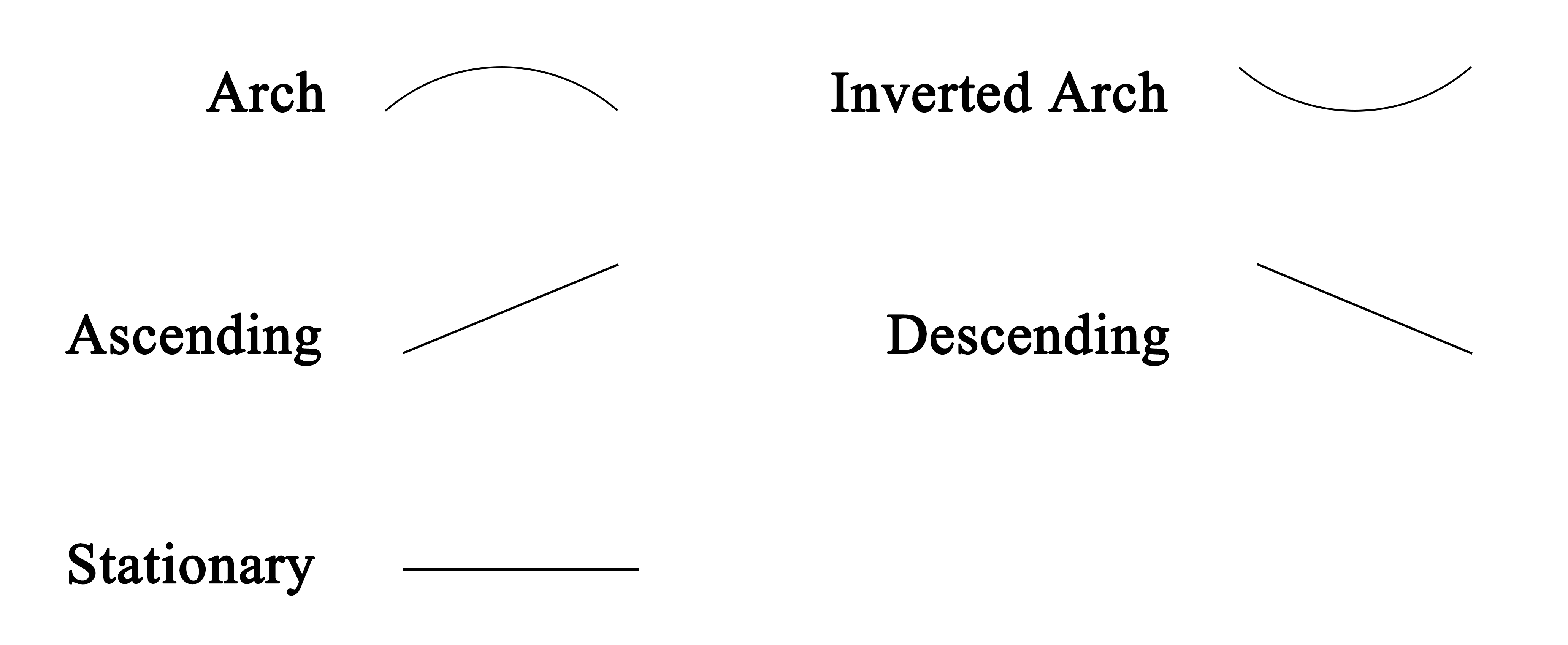7.1 Melodic Material: Range, Interval Structure, Gesture: Sight Singing exercises: Aural Training exercises: Tutorial
Melodic Characteristics: Range, Interval Structure, Gesture
Recognizing, building, and labeling chords has been our primary focus in the last several chapters. It is time to turn our attention to melody. Understanding melodic characteristics opens another avenue of exploration into how music works. In this chapter, we will focus primarily on range, interval structure, and gesture.
Range
A composition’s melodic range can be defined as the distance between its lowest and highest melody note. The range of a composition is often chosen for its intended performers. Music written to be easily sung by the masses, like folk music, popular music, chorales, and traditional songs normally spans an octave or less in order to make the music easy to sing and remember. Music written for trained musicians that is not intended for mass use often uses a much wider range.
Interval Structure
Interval structure refers to the use of steps versus leaps in the music. Music that is mostly stepwise uses conjunct motion, and is a good choice for music written to be easily sung by the masses. Music that uses disjunct motion uses more leaps than steps. The more a melody leaps, the harder it will be to sing, especially if those leaps are large and extend the range of the music. Music that contains an equal number of leaps and steps is labeled as balanced.
Let’s compare two compositions to their range and interval structure. Look at the example below, and listen to the recording. Find the range of the melody and determine if the melody is conjunct, disjunct, or balanced.

America:
My Country ‘Tis of Thee is a patriotic song meant to be sung by a whole nation full of people of all ages. It’s range is small. The lowest note is E4 and the highest is D5, making the range a minor 7th, which is less than an octave. This is a comfortable range for singability. The song only contains 4 leaps, making it conjunct and easily singable.
Next, look at example below and listen to the recording to compare Mozart’s Queen of the Night aria to My Country ‘Tis of Thee. What range and type of motion did Mozart use?

Mozart’s aria is drastically different from a patriotic song. The range is large. The lowest note of this excerpt is F4 and the highest is F6, which is a two-octave range. The extended range of this aria makes it challenging, even for trained singers. It also contains an abundance of leaps, especially in the extended part of the range. The disjunct nature of this melody also makes it hard to sing accurately. This piece was composed as a virtuosic show piece for a soloist and not meant to be accessible by the masses. Analyzing the range and interval structure of a melody can give us insight into how the piece works and who it’s intended performers would be.
Gesture
The term gesture in music describes the shapes created by the melodic line. There are five main types of melody shapes in music: arch, inverted arch, ascending, descending, and stationary. Look at the example below to see the shape of each gesture.

Understanding gestures can help us analyze music more effectively by eliminating decoration in the melody and looking at underlying structure. Gestures can help us compare and contrast phrases and understand progressions in music. Being able to hear gestures can also help us develop strong skills for aural training. Gestures can also help us find meaning in the music because emotion in music is often expressed through gestures. Lines that ascend tend to build tension. Lines that descend release tension. Arch shapes often reach for something. Inverted arch shapes often pull away from something. Stationary music can portray something stuck, weighted, or aimless. To explore melodic shape examples in pop vocal melodies, watch this video: Examples of Melodic Shapes in Vocal Melodies
Examine the melodic elements of range, interval structure, and gesture in the music you are currently practicing or studying. Is your music more conjunct or disjunct, and how does that affect the sound and character of the music? What is happening in the music at the highest and lowest points in the melodic range? Does the composer keep the same range and interval structure throughout, or is there a plan in how the music evolves? How do the shapes of each phrase help to tell the story of the music? Once you’ve looked at the details of those three melodic elements, listen to/play your piece again. Has your understanding and interpretation of the music changed? What are you doing differently now?

